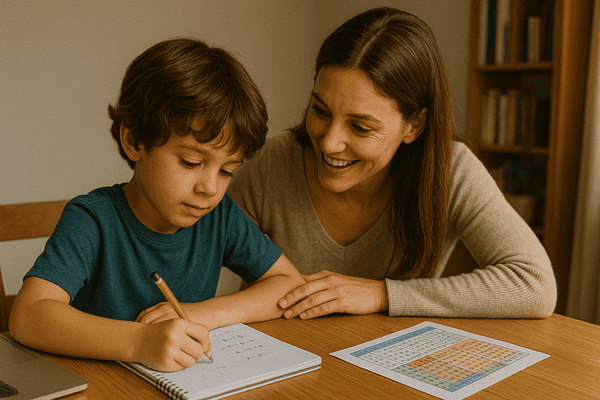A growth mindset is the belief that abilities and intelligence can be developed through effort, learning, and persistence. Children with a growth mindset are more resilient, more motivated to face challenges, and more willing to learn from mistakes.
By contrast, a fixed mindset — the belief that skills and intelligence are unchangeable — can limit a child’s potential. The good news? Parents can actively foster a growth mindset at home through simple, everyday interactions.
Why a Growth Mindset Matters
When children believe that their effort makes a difference, they are more likely to:
- Embrace challenges
- Learn from feedback
- Persist when things get hard
- Take academic risks
- Value effort over perfection
Studies show that children with a growth mindset achieve more in school, experience less anxiety, and are more likely to become lifelong learners.
Model a Growth Mindset Yourself
Your child learns how to think about success and failure by watching you. If you handle mistakes with grace and talk openly about learning from failure, your child will be more likely to do the same.
Instead of saying, “I’m terrible at math,” try:
- “Math is tough for me, but I’m working on it.”
- “I didn’t get it right yet, but I’ll try again.”
When you model persistence and flexibility, your child understands that it’s okay not to know something — and that learning is a process.
Praise Effort, Not Just Outcomes
One of the most powerful ways to build a growth mindset is by praising the right things. Instead of focusing only on results, celebrate effort, strategies, and progress.
Try saying:
- “You worked really hard on that puzzle. I’m proud of how patient you were.”
- “I noticed you tried a new way to solve that problem — great thinking!”
- “Even though it was hard, you didn’t give up. That’s real perseverance.”
This helps children understand that success isn’t just about talent — it’s about trying, learning, and growing.
Use the Word “Yet”
When your child says, “I can’t do this,” respond with, “You can’t do it yet.” This simple word reinforces that learning is a journey and that skills take time to develop.
Use it in your own speech too:
- “I haven’t figured this out yet, but I’m getting closer.”
- “We’re not there yet, but we’ll keep practicing.”
“Yet” adds hope to frustration and teaches children to keep going even when progress is slow.
Reframe Mistakes as Learning Opportunities
Children often fear mistakes because they associate them with failure or punishment. Help shift their perspective by treating mistakes as part of the learning process.
When your child makes an error, say:
- “That mistake helped you see a new way to do it.”
- “What can we learn from this?”
- “Every time we get something wrong, we get closer to getting it right.”
This teaches children that failure isn’t the opposite of success — it’s part of how we succeed.
Encourage Curiosity and Problem-Solving
Support your child’s natural curiosity. When they ask questions, explore ideas, or try new things, they’re exercising their brain and building confidence.
Give them time to figure things out on their own before jumping in to help. Ask questions like:
- “What do you think would happen if…?”
- “Is there another way to try that?”
- “How could we solve this together?”
Encouraging exploration and critical thinking shows children that learning is exciting, not just a task to complete.
Avoid Labels Like “Smart” or “Talented”
Phrases like “You’re so smart” or “You’re a natural” may seem positive, but they can backfire. Children praised for their intelligence may become afraid to make mistakes, thinking it means they’re not “smart” anymore.
Instead, focus on what they did to succeed:
- “You kept practicing until you got it.”
- “You used a great strategy to solve that.”
- “You made a great effort — that’s what helped you improve.”
This builds a self-image based on effort and growth rather than fixed traits.
Teach About the Brain
Help your child understand that the brain is like a muscle — the more you use it, the stronger it gets. Explain that learning literally changes the brain by creating new connections.
There are age-appropriate books, videos, and activities that illustrate this concept. When children understand how the brain grows, they see effort as something powerful, not pointless.
Embrace Challenges Together
Encourage your child to take on challenges, even if they might fail. Talk about your own challenges and how you face them.
Celebrate when they try something difficult, whether they succeed or not:
- “I’m proud of you for trying something new.”
- “It takes courage to keep going — and you did it!”
Help them reflect after a tough situation by asking:
- “What did you learn?”
- “What would you do differently next time?”
These conversations help build resilience and confidence.
Create a Growth Mindset Environment
Make your home a place where mistakes are okay, effort is valued, and learning is celebrated.
Post quotes like “Mistakes are proof you are trying” or “Practice makes progress.” Encourage family discussions about what each person is working on — not just accomplishments.
Let your child see that growth is part of everyone’s journey — including yours.
